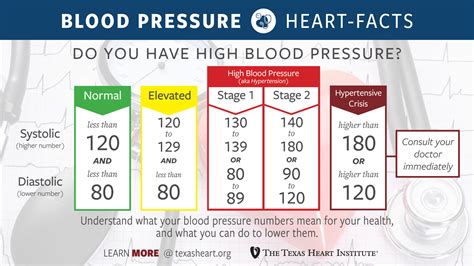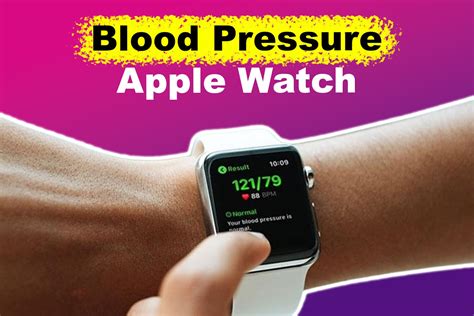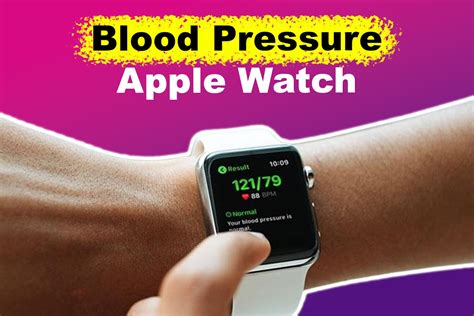Worn by millions of people worldwide, the Apple Watch has become more than just a stylish accessory on our wrists - it has transformed into a high-tech companion that promises to revolutionize the way we monitor our health. Among its many touted features, one particularly intriguing claim is the ability to measure vital signs such as blood pressure.
But is this capability too good to be true? Can a small device strapped to your wrist really provide accurate measurements of crucial physiological parameters? In this article, we delve into the world of wearable technology and explore the veracity of Apple Watch's blood pressure measurement capabilities, separating fact from fiction.
With the growing trend of health-conscious individuals seeking easy and convenient ways to monitor their well-being, the promise of a device that can seamlessly integrate into our daily lives and deliver accurate health data holds undeniable appeal. Imagine having the ability to track your blood pressure throughout the day without the need for bulky traditional cuffs or constant visits to the doctor's office.
Understanding Blood Pressure and its Significance

Exploring the intricacies of vital health metrics and their implications is of utmost importance when it comes to achieving overall well-being. It is crucial to comprehend the significance of blood pressure and how it affects our body's functionality and long-term health.
Human blood pressure refers to the force exerted by circulating blood against the walls of our arteries. This measure plays a pivotal role in indicating the efficiency of our cardiovascular system, ensuring the delivery of oxygen and nutrients to various organs and tissues throughout our body.
Understanding the different components of blood pressure, namely systolic and diastolic pressure, allows us to delve deeper into its significance. Systolic pressure represents the force exerted on arterial walls during the contraction of the heart, while diastolic pressure corresponds to the pressure between heartbeats.
Consistently elevated blood pressure, often referred to as hypertension, can have detrimental effects on our health. It significantly increases the strain on our arteries and organs, potentially leading to serious conditions such as heart disease, stroke, and kidney problems.
Recognizing the importance of regular blood pressure monitoring and maintaining healthy levels is vital for preventing related complications. While various methods and devices exist for measuring blood pressure, it is essential to assess the reliability and accuracy of different technologies, such as wearable devices like the Apple Watch.
The Promise of Apple Watch's Blood Pressure Monitoring Feature
Exploring the potential and possibilities of the blood pressure monitoring feature on the Apple Watch.
In recent years, wearable technology has greatly evolved, offering innovative solutions for tracking various health metrics. With the advancement of smartwatches, the Apple Watch has emerged as a leading device in the wearable market. While many are already aware of its well-known features, such as heart rate monitoring and activity tracking, the promise of its blood pressure monitoring feature has sparked significant interest.
Apple Watch's blood pressure monitoring feature holds the potential to provide individuals with a convenient and reliable tool for tracking their blood pressure levels. By utilizing advanced sensors and algorithms, the device aims to offer accurate readings and insights, empowering users to take better control of their cardiovascular health.
This feature holds immense promise in terms of preventive care, as it allows individuals to monitor their blood pressure regularly and proactively seek medical attention if necessary. With a simple tap on the wrist, users can access their blood pressure readings and effortlessly track any fluctuations. This convenience may prove invaluable in identifying potential health risks and promptly addressing them.
Additionally, the Apple Watch's blood pressure monitoring feature has the potential to enhance the overall awareness and understanding of one's cardiovascular health. By providing users with personalized insights and trends over time, individuals can gain a deeper understanding of how various factors, such as exercise, stress, and diet, may impact their blood pressure levels. This knowledge can empower individuals to make informed lifestyle choices and adopt healthier habits, ultimately leading to better long-term cardiovascular health.
However, it is important to note that the development and implementation of accurate blood pressure monitoring on a wrist-worn device present significant challenges. Ensuring reliability and accuracy in readings require precise calibration, thorough validation, and ongoing advancements in technology. It is crucial to approach this feature with cautious optimism and acknowledge that it may not replace traditional blood pressure monitoring methods entirely.
Nonetheless, the promise of Apple Watch's blood pressure monitoring feature opens up new avenues for individuals to actively engage with their cardiovascular health and take proactive steps towards well-being. With further advancements in technology and ongoing research, this feature holds the potential to revolutionize the way we monitor and manage our blood pressure.
The Science Behind Apple Watch's Blood Pressure Measurement

Understanding the Mechanisms
The intricate process by which the Apple Watch provides blood pressure measurements is an amalgamation of advanced technologies and scientific principles. By leveraging cutting-edge sensors and intelligent algorithms, the wearable device endeavors to approximate the user's blood pressure readings with utmost precision.
Applying Optical Sensors
Apple Watch utilizes sophisticated optical sensors that emit specific wavelengths of light onto the user's skin, allowing them to penetrate the blood vessels beneath. Subsequently, these sensors detect and analyze the light that is either absorbed or reflected by the blood, unveiling valuable information about the user's blood pressure.
Analyzing Pulsatile Properties
Through the analysis of the pulsatile properties of the blood vessels, Apple Watch extrapolates the user's blood pressure measurements. The wearable device accurately discerns the changes in blood volume during each heartbeat, enabling it to compute vital metrics such as systolic and diastolic pressure.
Integrating Machine Learning Algorithms
Apple Watch incorporates powerful machine learning algorithms that continuously learn from an ever-expanding dataset of blood pressure measurements. By employing this artificial intelligence, the device further refines its accuracy over time, improving the precision of future readings.
Ensuring Calibration and Validation
To ensure reliable blood pressure measurements, Apple Watch undergoes rigorous calibration and validation processes. The device is calibrated using clinically validated standards to establish a consistent baseline, and its accuracy is verified through independent testing and validation procedures.
Considering Limitations and Variances
While Apple Watch's blood pressure measurements showcase promising potential, it is crucial to acknowledge the limitations and variances inherent in this technology. Factors such as individual physiological variations, environmental influences, and device fit may affect the accuracy of the readings. Therefore, it is always advisable to consult a healthcare professional for a comprehensive evaluation.
In conclusion, the science underlying Apple Watch's blood pressure measurement endeavors to provide users with convenient and reliable insights into their cardiovascular health. By combining optical sensors, pulsatile analysis, machine learning algorithms, and stringent calibration processes, the wearable device aims to offer accurate readings while acknowledging its inherent limitations.
Validation Studies: Can Apple Watch Provide Accurate Measurements of Blood Pressure?
One of the crucial aspects of determining the reliability and trustworthiness of the Apple Watch's ability to measure blood pressure lies in the conduction of validation studies. These studies aim to assess whether the Apple Watch is indeed capable of providing accurate measurements of blood pressure.
The validity of the Apple Watch's blood pressure measurements can be intricately evaluated through meticulous examination and analysis of the results obtained from these validation studies. By scrutinizing the data collected, researchers can determine whether the measurements obtained from the Apple Watch align with the gold standard method for measuring blood pressure.
Validation studies often involve comparing the readings from the Apple Watch to those acquired using traditional blood pressure measurement devices, such as sphygmomanometers. Through this comparative analysis, the accuracy and consistency of the Apple Watch's blood pressure measurements can be evaluated. Statistical methods can further aid in quantifying any discrepancies or deviations between the two measurement techniques.
Additionally, validation studies should incorporate a diverse range of participants to account for various factors that may influence blood pressure readings, such as age, gender, and underlying health conditions. By including individuals with a wide range of blood pressure levels and profiles, these studies can provide a more comprehensive understanding of the Apple Watch's ability to accurately measure blood pressure across different populations.
Furthermore, the reproducibility and consistency of the Apple Watch's blood pressure measurements should be assessed through repeated measurements over time. This assessment is crucial to determine whether the device produces consistent and reliable readings, regardless of external factors or user variations.
In conclusion, validation studies play a pivotal role in determining the accuracy and reliability of the Apple Watch's blood pressure measurements. By conducting comprehensive analyses and comparing the results with established measurement techniques, these studies can provide valuable insights into the device's efficacy in measuring blood pressure.
Limits and Challenges of Apple Watch's Blood Pressure Monitoring

When considering the capabilities of the Apple Watch in monitoring blood pressure, it is important to recognize that there are certain limitations and challenges that need to be taken into account.
1. Accuracy: The accuracy of blood pressure measurements obtained through the Apple Watch may be influenced by various factors. These can include the position of the wrist, user movements, and even the fit of the watch. It is essential to ensure a proper fit and positioning for the most accurate readings.
2. Calibration: Calibration of the Apple Watch for blood pressure monitoring is a critical aspect. Regular calibration with a validated device is necessary to maintain accurate readings. Without proper calibration, the measurements obtained may not be reliable or consistent.
3. Validation: The Apple Watch's blood pressure monitoring feature is yet to be validated thoroughly through clinical studies. It is important to note that the device has not received clearance from regulatory bodies such as the FDA for medical-grade blood pressure monitoring. Therefore, its results should be interpreted with caution and not relied upon solely for medical decision-making.
4. User Error: User error can significantly impact the accuracy of blood pressure measurements. Inadequate understanding of proper usage techniques, improper positioning of the watch, or failure to follow instructions can lead to erroneous readings. User education and awareness are crucial in ensuring reliable results.
5. Individual Variations: Blood pressure can vary significantly among individuals due to various factors, including age, health conditions, and lifestyle choices. The Apple Watch's blood pressure monitoring feature may not be suitable for everyone, and individual variations need to be considered when interpreting the results.
6. Regulatory Considerations: The use of the Apple Watch for blood pressure monitoring may have regulatory implications. Compliance with medical device regulations and standards is essential for ensuring safety and accuracy. Meeting necessary requirements and obtaining appropriate clearances are crucial steps in the development and use of such features.
In conclusion, while the Apple Watch may offer convenience and potential benefits in monitoring blood pressure, it is important to be aware of the limitations and challenges associated with its use. Regular calibration, user education, and cautious interpretation of results are necessary to ensure reliable and accurate blood pressure measurements.
Alternative Methods to Measure Blood Pressure Using the Apple Watch
When it comes to monitoring our cardiovascular health, the Apple Watch has been a revolutionary device. While the traditional, cuff-based method of measuring blood pressure is considered the gold standard, there has been a growing interest in finding alternative ways to measure blood pressure using wearable technology like the Apple Watch. In this section, we will explore some alternative methods that have been proposed and evaluate their effectiveness.
| Method | Description | Potential Challenges |
| Photoplethysmography (PPG) | PPG is a technique that measures blood pressure by analyzing changes in blood volume in the arteries using optical sensors. It relies on the fact that the volume of blood in the arteries fluctuates with each heartbeat. By measuring these fluctuations, it is possible to estimate blood pressure. | One potential challenge is the accuracy of the measurements, as they can be affected by factors such as motion artifacts and ambient light. Additionally, PPG-based measurements may not be as reliable in individuals with certain medical conditions. |
| Pulse Transit Time (PTT) | PTT is a method that calculates the time it takes for the pulse to travel between two points in the body. This time is influenced by blood pressure, as higher pressure leads to faster pulse transit. By measuring PTT using sensors on the Apple Watch, it is theoretically possible to estimate blood pressure. | A major challenge with PTT-based measurements is the need for accurate and consistent sensor placement on the body. Any variations in sensor positioning can lead to inaccurate readings. Furthermore, factors like physical activity and body position can also affect PTT measurements. |
| Machine Learning Algorithms | Machine learning algorithms can be trained to analyze various data collected by the Apple Watch, such as heart rate variability, skin conductance, and sleep patterns, to estimate blood pressure. These algorithms can learn patterns and correlations from the data to make predictions. | The accuracy of machine learning algorithms is heavily dependent on the quality and diversity of the training data. Additionally, these algorithms may not be suitable for real-time blood pressure monitoring and could require periodic calibration. |
While these alternative methods show promise, it is important to note that they are still in the early stages of development and require further research and validation. The accuracy and reliability of blood pressure measurements using the Apple Watch will continue to be a topic of investigation, and it is essential to consult healthcare professionals for accurate clinical measurements. As technology evolves, these alternative methods may become more refined and provide a convenient way for individuals to monitor their blood pressure at home.
FAQ
Is it true that you can measure blood pressure with an Apple Watch?
No, it is not true. The Apple Watch does not have the capability to measure blood pressure.
Why do some people believe that the Apple Watch can measure blood pressure?
Some people might believe that the Apple Watch can measure blood pressure because it has a heart rate monitor, and they may think that heart rate and blood pressure are the same thing. However, blood pressure is a separate measurement that requires a different type of sensor.
Are there any apps or accessories available that can allow the Apple Watch to measure blood pressure?
No, there are currently no apps or accessories available that can turn the Apple Watch into a blood pressure measuring device. Any claims otherwise are false.
Are there any smartwatches or wearable devices that can accurately measure blood pressure?
Yes, there are some smartwatches and wearable devices that claim to measure blood pressure accurately. However, it is important to note that these devices should be validated and certified by medical authorities before relying on them for accurate measurements.
What are the risks of relying on an inaccurate blood pressure measurement from a smartwatch or wearable device?
Relying on an inaccurate blood pressure measurement can lead to incorrect assessments of one's health. This can result in unnecessary stress or neglect of potential health issues. It is always recommended to consult with a healthcare professional and use medically approved devices for accurate blood pressure measurements.
Can I measure my blood pressure accurately with an Apple Watch?
While the Apple Watch offers various health-tracking features, including heart rate monitoring, it does not have the capability to measure blood pressure directly. Therefore, you cannot get an accurate blood pressure reading using only an Apple Watch. To measure blood pressure, you would need a dedicated blood pressure monitor.
Is it possible for a future version of the Apple Watch to measure blood pressure?
Though there have been speculations about Apple working on adding blood pressure monitoring capabilities to future versions of the Apple Watch, currently there is no official confirmation of such a feature being added. While it is technically feasible, accurate blood pressure measurement requires specialized hardware and validation from medical authorities. Therefore, it is uncertain when or if Apple will include this functionality in their smartwatch.




